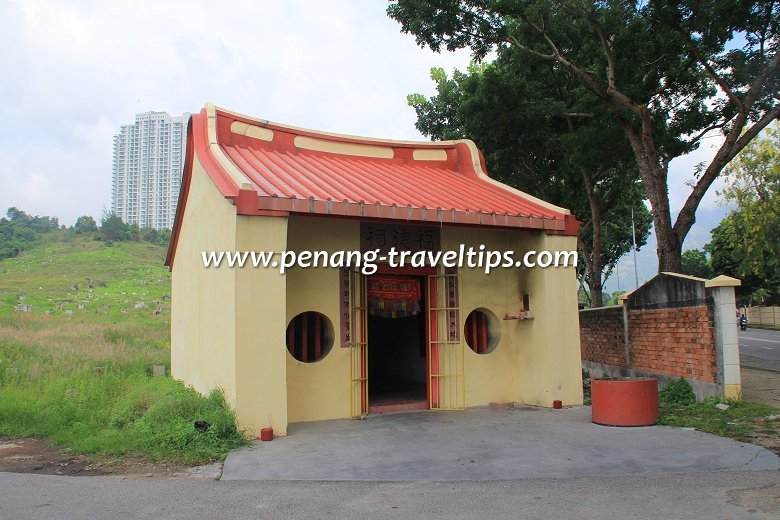Batu Lanchang Hokkien Cemetery is one of the major Chinese cemeteries in Penang. It is managed by United Hokkien Cemeteries, a body representing the various Hokkien clan associations of Penang.
The Batu Lanchang Hokkien Cemetery is the oldest continuously-used cemeteries in Penang, having been established in the 19th century. In used to stretch from Batu Lanchang Lane all the way to Thean Teik Road. However, over the decades, parts of the cemetery land have been converted for development. Lebuhraya Thean Teik, for example, cuts right through the cemetery land to provide access from Farlim to Batu Lanchang Lane. For the time being however, it is unlikely that there will be further diminishing in the size of the cemetery, but only time and the pressing need of development can determine the future of this cemetery land.
 The Tua Pek Kong Funerary Shrine at Batu Lanchang Hokkien Cemetery (31 May 2012)
The Tua Pek Kong Funerary Shrine at Batu Lanchang Hokkien Cemetery (31 May 2012)
Among the graves here include the majestic tomb of Koh Lay Huan, the first Kapitan Cina of Penang, who came to the island as soon as Captain Francis Light arrived and claimed the island on behalf of King George III. As he died in 1826, the cemetery is believed to have dated as far back as then.
Also buried here is the 19th century philanthropist Koh Seang Tat, grandson of Koh Lay Huan. Seang Tat is perhaps best remembered for his gift of the Municipal Fountain to the government of Penang. He died in 1899. Recently (2011), local historians and heritage enthusiasts were alarmed upon learning that Koh Seang Tat's tomb was to be dug up and his remains exhumed for development. When historians paid a visit to the site, they discovered that Koh Seang Tat's grave had indeed been damaged.
As a result of the uproar, the owner of the site - a descendant of Koh Lay Huan - informed the Sun newspaper that the tomb of Koh Lay Huan and his wife would not be disturbed, and that the area would be turned into a small memorial park.
Contact
United Hokkien Cemeteries Phone: 04-826 1967WhatsApp: 017 416 1293
Email: unitedhokkiencemeteries@gmail.com
 Batu Lanchang Hokkien Cemetery (31 May 2012)
Batu Lanchang Hokkien Cemetery (31 May 2012)
Updates on the Batu Lanchang Hokkien Cemetery
4 January, 2020Construction of the 5.7km Ayer Itam-Tun Dr Lim Chong Eu Expressway Bypass will involve the relocation of several 100-year-old graves at the United Hokkien Cemeteries.
Location of Batu Lanchang Hokkien Cemetery on the map
List of Cemeteries in Penang and Cemeteries in Malaysia

Copyright © 2003-2025 Timothy Tye. All Rights Reserved.

 Go Back
Go Back